
by John Walker
These pictures were taken at the A/E Systems computer-aided design trade show in Anaheim, California in the fall of 1985 (I don't recall the exact dates, but the photos were processed in October 1985, so it was probably September or October). By this time Autodesk had gotten the trade show business pretty much down pat, which was a good thing considering the number of shows we did. We'd pay for the booth and incidental expenses of the show, but most of the equipment and booth staffing was provided by local dealers and distributors, who had the opportunity to make direct contact with attendees. Autodesk would provide printed sales literature, and send people to help out—just a few for quality control purposes at minor shows, but a substantial number for a major industry show like this. The Autodesk contingent would usually include software developers who would do demonstrations of new AutoCAD releases or associated products. This afforded an opportunity for the developers to meet dealers, customers, and third-party developers, and was an enormous educational experience; when you're toiling away deep in the code, it's easy to lose perspective on how the product is really being used and what the genuine needs of the customers are.
There were a number of memorable things about this show. We were showing AutoCAD version 2.1, which had been released at around the time of the initial public stock offering in May 1985. Let's just say that it wasn't one of the high points in Autodesk's quality history. Consequently, the “AutoCAD gives up” message, indicating the program had crashed, was not that uncommon an occurrence on that release. In response, our nemesis, T&W Systems, makers of VersaCAD, gave away lapel buttons at their booth around the corner from ours which said, “Never gives up”.
In an adjacent hall, there was a plastics industry show going on, and you could wander back and forth between the two. In the centre of the plastics show was a huge injection moulding machine which periodically belched toxic smoke. AutoCAD 2.1 may have crashed a lot, but at least it didn't stink.
These pictures were taken by John Walker with a Kodak Disc Camera, a passing fad in the 1980s. These photographs and this document are in the public domain.

As was usually the case, the Autodesk booth was jammed throughout the show. I never understood why some companies spent vast sums on huge, sparsely packed booths. Having a swarm of people trying to get into your booth creates a sense of excitement which draws attendees in your direction: “Hey, something's happening there”.


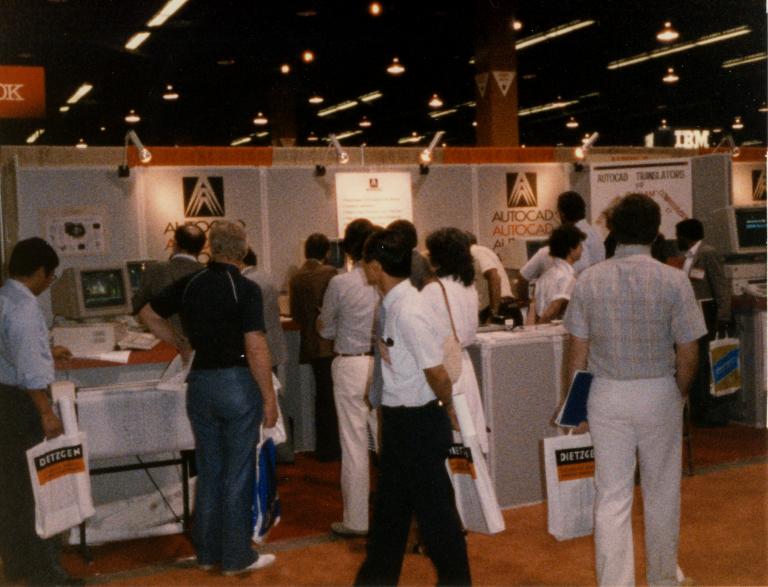
On the right side of this picture you can see a poster for the “AutoCAD Translators”, which we'd recently introduced in conjunction with a third party developer. These allowed bidirectional data interchange with CADAM, Computervision, and Intergraph systems, which we thought was strategically important, as large companies could offload undemanding work from their expensive mainframe and workstation CAD systems to AutoCAD. In fact, the explosive growth of AutoCAD occurred almost independently of the large-scale CAD market, among customers who had never considered and could not afford the heavy iron.
I think that may be Dan Drake doing a demo on the machine at the left.
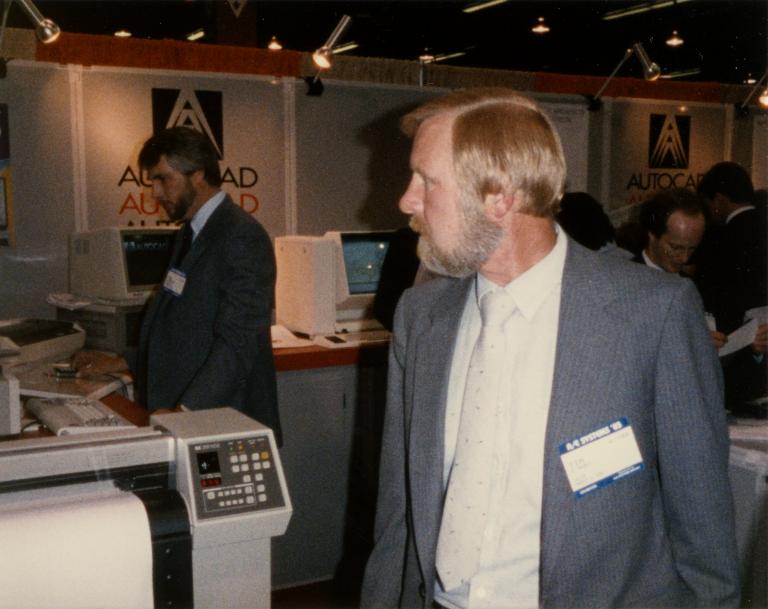
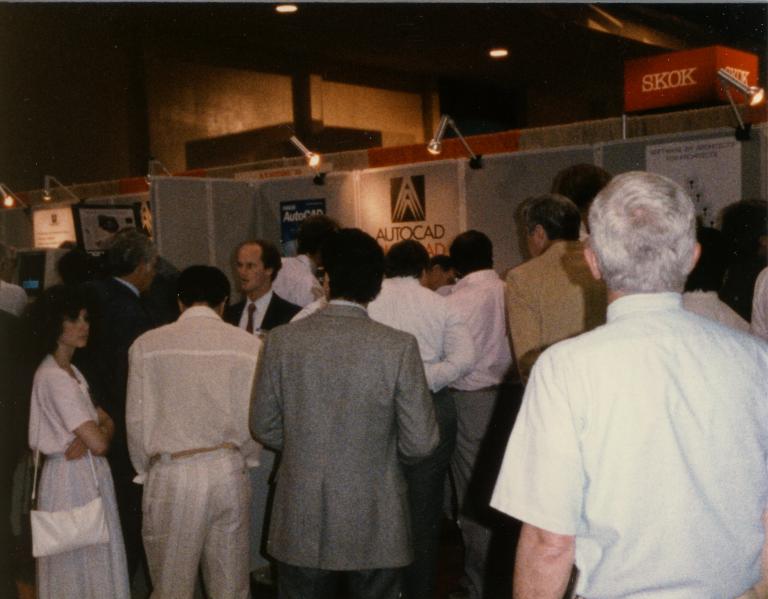
That's Peter Barnett holding forth to the crowd at the left. Behind him is a poster for the recently-published Inside AutoCAD, the first independent book about the product. The title on the poster at the right reads “Software by Architects for Architects”—it's promoting our first industry-specific application add-on, AE/CADD (later renamed AutoCAD AEC Architectural), which had been released in August of 1985. I recall an AE/CADD demo at this show where we were demonstrating how you could add a door to a wall, which would automatically be broken to accommodate it. The door was selected, the position in the wall indicated, and through the miracle of AutoLISP and menu macros the wall automatically parted and in popped…a toilet. The bug was quickly fixed.
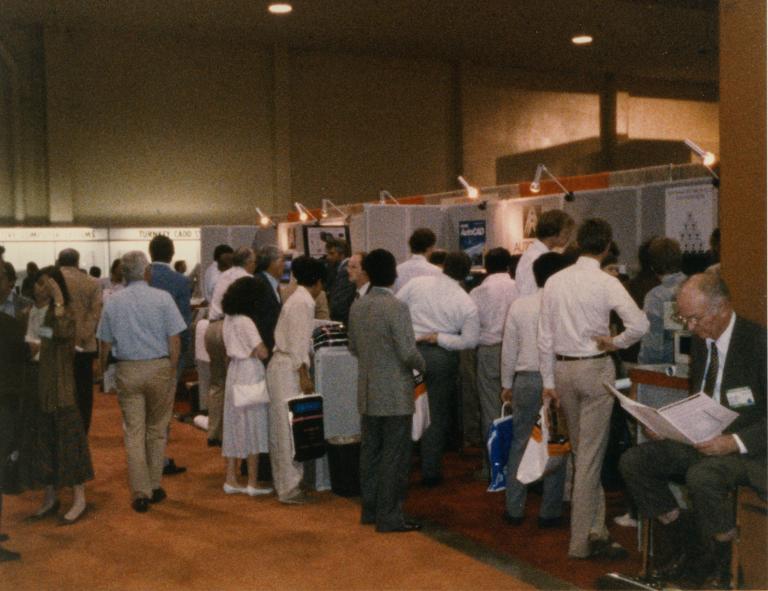
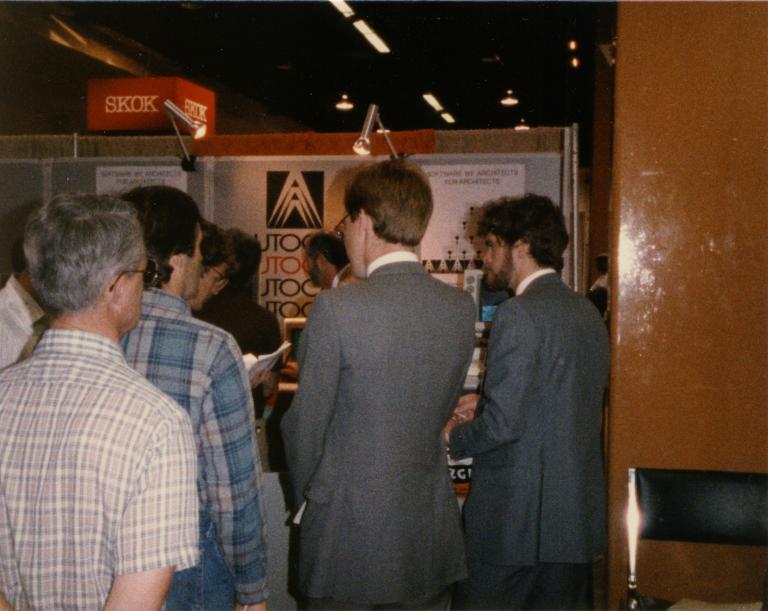
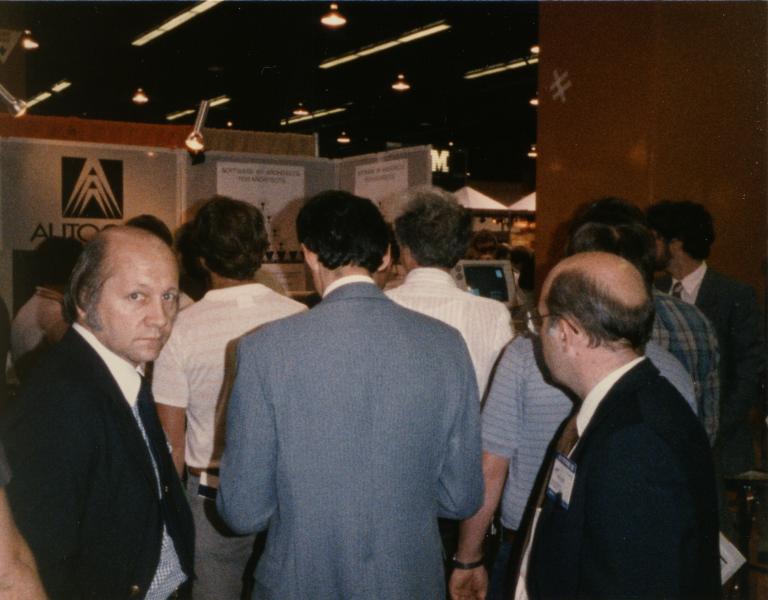
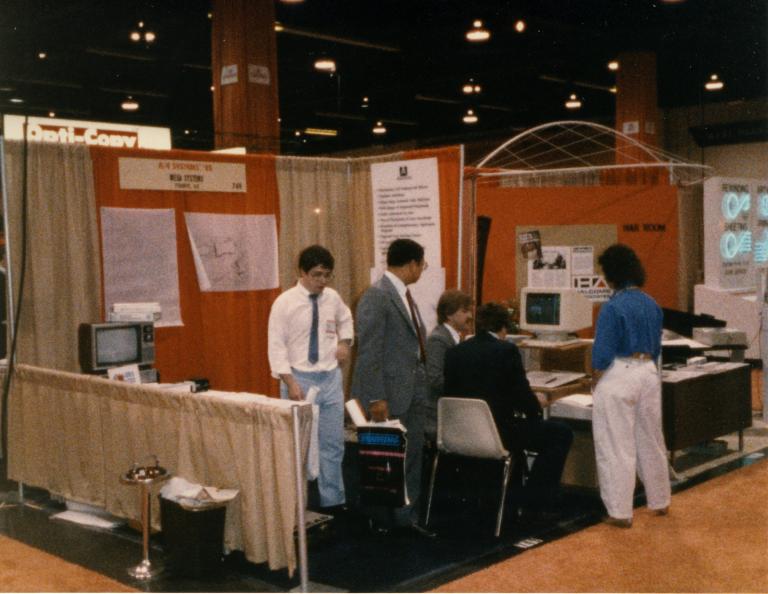
Several AutoCAD distributors and third-party developers had their own booths at the show. This is the booth of Mesa Systems of Tempe, Arizona.
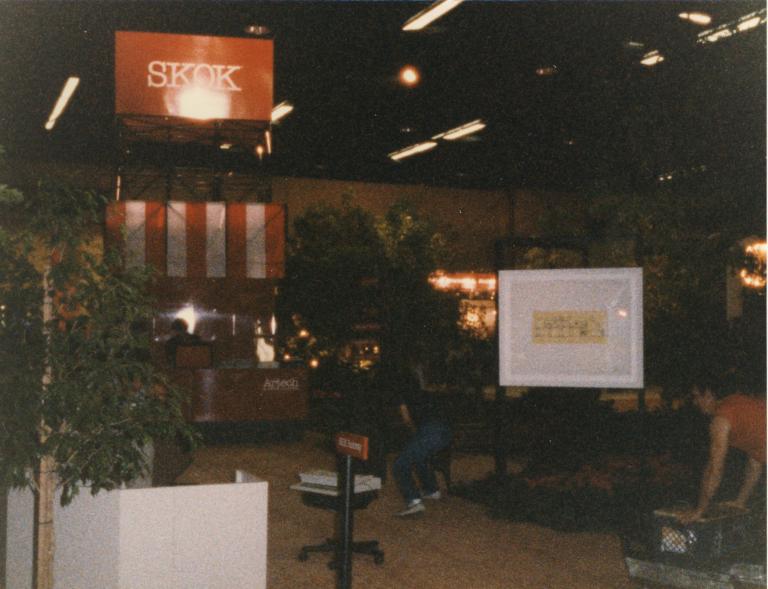
Unlike the modest Autodesk booth, workstation CAD vendor SKOK Systems went all-out at this show. They transformed an enormous area near the entry to the hall into an indoor garden complete with trees, a winding path, and park benches. Their booth was essentially deserted throughout the show.
|
by John Walker July, 2007 |
|